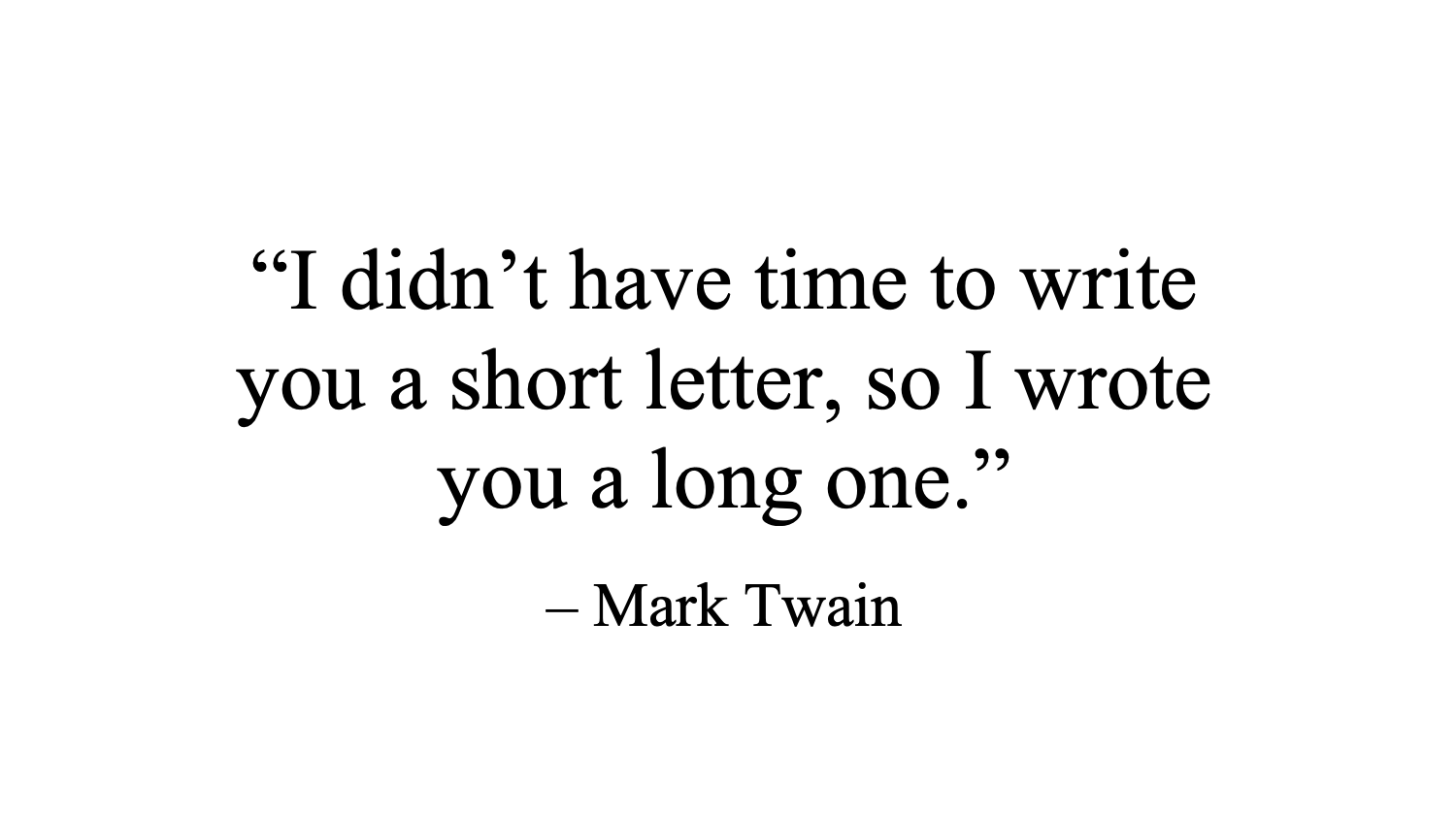
21 Sep Brevity.
“I didn’t have time to write you a short letter, so I wrote you a long one.” -Mark Twain
On a regular basis I receive emails in the form of 2000+ word essays, most of which could have been reduced to a few defining statements, bullets, or questions. Instead of taking time to produce a concise, well-organized email, the sender types free-form, hoping more words will equal better understanding.
These are dangerous communications. Of course the ‘time load’ they place on the recipient isn’t ideal, but more importantly, each unnecessary sentence opens new ‘misinterpretation vectors’–opportunities for the message to be misunderstood. Even short, two paragraph emails can be guilty of lazy, imprecise language, triggering threads of email exchanges which might have been avoided with a few extra moments of composition.
Next time you prepare to communicate something important, take time to consider your approach. Turn on your creativity! Instead of paragraphs can you utilize bullet points? Your keyboard is full of structural characters you might not regularly use. You might deploy brackets ([ ]), or the equal sign (=), or the approximation sign (~). I find most folks don’t even use hyphens (–) or semicolons (;)! Does your email contain ‘scope creep’? What words can you eliminate?
During my undergraduate program my philosophy professor–with whom I took at least one course per semester–subjected us to what felt like an absurd amount of brevity practice. Among other things, each week we were to write a short synopsis on the current chapter of whichever philosophic work we had reviewed. The only limitation: no more than five sentences were allowed. Talk about difficult! The point is, there are always words or entire sentences which are not serving the message–learn to cut them out!
The key is to be clear and efficient, and this takes effort and practice. The most successful people I know are EXCELLENT communicators and rarely offer an unnecessary word. Next time you sit down and realize you’re composing a five paragraph essay, take some time to think creatively…you’ll save time for yourself and your recipient.
Resource recommendation: The Office of Assertion, by Scott F. Crider. Essentially an academic epistle on the art of brevity (and rhetoric in general), each of my classes with the above professor had the requirement that we were to read The Office of Assertion once each month of the class.

No Comments